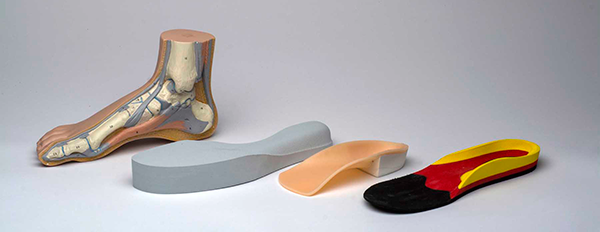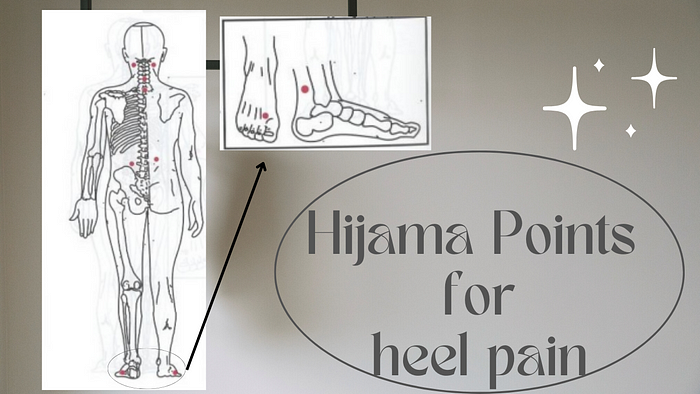Does Hijama Cupping Therapy Heal the Heel pain (Plantar Fasciitis)?
- Get link
- X
- Other Apps
Plantar fasciitis is one of the most common orthopedic problems.
Plantar fasciitis is a pain and inflammation in the bottom of the heel at the point where the thin band of tissues called the plantar fascia connects the heel bone to the front of the foot. The band of tissues called the plantar fascia goes through a lot of wear and tear in our daily routine. A rough routine or too much pressure on the bottom of the foot damages the tissues, as a result, the plantar fascia becomes inflamed and the inflammation causes stabbing pain that worsens as an individual takes the first few steps in the morning. As an individual gets up and moves around, the pain decreases eventually, but it returns after standing too long or when you stand up after a while.
Structure of the Foot
A human foot has 28 bones, 33 joints and around 100 muscles, tendons and ligaments. The plantar fascia connects the heel bone to the toes. It supports the arch of the foot and absorbs some of the strain or pressure that an individual puts on the bottom of the feet whether from running, standing for a longer time, or other kinds of heavy exercises. Our feet bear our weight when the bottom of the foot is inflamed or torn, the pain is inevitable.
Risk Factors
- Obesity
- 40–60 years of age
- Most females are prone to heel pain
- Athletes or runners
- Having flat or high arch feet
- Wearing high-heeled shoes commonly
- Walking in an awkward position
Causes of Plantar Fasciitis
- Tight-calf muscles which hardly flex the foot
- Swelling or stiffness
- Being obese(overweight)
- Repetitive impact activities like running, jumping, hiking
- Standing for a prolonged period
- Overstress or tension on the fascia may cause small tears. Repeated tearing of the fascia may inflame it and cause pain.
- Extreme exercising or start an exercise without stretching your claves.
- Wear shoes that don’t support feet, shoes with soft soles or poor arch support.
Symptoms of Plantar Fasciitis
Pain in the bottom of the heel is the primary symptom of plantar fasciitis. Constant pain can make the bottom of the foot swell or stiff. It usually affects one foot but it can affect both feet.
Sometimes the pain in the foot irritates the nerves which can radiate up to the ankle.
People with heel pain may experience back pain. Perhaps back pain results from a change in posture as we try to avoid putting pressure on the foot.
Planter fascitis itself doesn’t cause calf muscle pain but when the muscles are too tight then the pain in the calf muscles happens.
How to get rid of Heel Pain Naturally?
Home remedies help to cure heel pain naturally. They include:
- Apply an ice pack to the affected area three to four times a day for 20 minutes.
- Stretches may help to prevent plantar fasciitis. Stretching your calves and plantar fascia loosens the muscles and may reduce heel pain.
- Simple home exercises may strengthen the lower back and foot muscles that may help to stabilize the ankle, reduce pain or may prevent plantar fasciitis.

- Resting the affected foot is necessary to treat plantar fasciitis. Avoid tasks and exercises that place strain on the affected foot. Complete rest is impractical so encourage yourself to indulge in a degree of low activity.
- Hot and cold contrast baths may also provide quick rest from pain. Fill two containers with water. One should have cold water and the other should have hot water. Put your feet in hot water then transfer it to another. Repeat the process several times.
- Try wearing supportive, sturdy shoes because sandals or flip-flops do not have built-in arch support.
- Shoe inserts, arch supports or custom-made foot orthotics may also aid in treating heel pain. Custom foot orthotics accelerate the healing, by correcting imbalances in the joints, muscles, nerves and ligaments. Feet have a chance to heal quickly when they are properly supported.

- Massaging the affected area with oil may provide temporary relief to the heel pain and improve blood flow to the area. Some studies suggest that using essential oils may reduce pain and inflammation for certain conditions.
Shoes for Plantar Fasciitis
Plantar fasciitis causes pain and discomfort in the heel so finding a suitable shoe may help to reduce the pain and discomfort.
Ultra-high heels are the worst type of shoes to wear for an individual if they have plantar fasciitis. High heels raise the arch of the foot to an unnatural angle which puts extra strain on the plantar fascia and causes heel pain.
Flats create the opposite problem for the feet. Flats don’t have arches to support the plantar fascia. Without the proper support, the arches can be strained and flattened because flats have no support system for arches which may cause heel pain. Flip-flops also have flat and skinny soles which have zero support for the heel.
The best type of shoes may vary from person to person but in general, the shoe that supports the foot and the heel, has good cushioning, enough arch support and a soft, flexible insole is the best type of shoe for any foot.
Best Diet to Reduce the Symptoms of Plantar Fasciitis
Nutrition is not only associated with weight management, it also affects different parts of our body including the feet. Dietary changes promote the reduction of inflammation and pain. The diet plan for plantar fasciitis focuses on limiting the food that increases pain and consuming the food that helps to decrease inflammation in the body.
Unhealthy choices in a diet may lead to inflammation which can be a major cause of plantar fasciitis. Anti-inflammatory food is one of the best choices to prevent plantar fasciitis.
Foods that are high in calcium, vitamins, magnesium, minerals and compound can greatly reduce the effect of heel pain. Calcium helps to prevent the development of heel spurs while magnesium and vitamins help to reduce inflammation in the body. Gluten-free food is encouraged for plantar fasciitis.
Green leafy vegetables help to prevent chronic diseases. Spinach, carrots and broccoli are one of the most famous anti-inflammatory vegetables.
Healthy fatty acids like flax seeds, pumpkin seeds, organic canola oil, salmon, tuna and fish oil contain a high amount of omega-3 fatty acids which reduces inflammation in the body.
All kinds of berries, tomatoes, oranges, and avocadoes are rich in minerals, vitamins, antioxidants and fibre.
Turmeric is one of the most famous spices all around the world to treat inflammation of all kinds and plantar fasciitis is no exception.
Nutrition plays a very important role to decrease the symptoms caused by plantar fasciitis. Let’s discuss some foods that increase inflammation in the body tissues.
Sugar is the prime culprit for increasing irritation and inflammation in the body. The foods high in carbohydrates transfer into sugar after digestion. It increases blood sugar levels which may shrink blood vessels. Narrow blood vessels decrease blood supply which is the major cause of inflammation in the body. Processed and refined foods like white flour, refined oils and refined grains cause inflammation. Saturated fats and trans fats found in junk foods can also be avoided.
Plantar Fasciitis & Hijama Cupping Therapy
Hijama or wet cupping therapy is an ancient form of alternative medicine in which negative pressure is created by applying cups on the skin and the blood is drawn out through incisions. The cups create a negative pressure through suction that is used to treat inflammation, increase blood circulation and reduce pains in the body. Cupping therapy can be performed using several different techniques. The two primary types are dry cupping therapy and wet cupping therapy.
According to a study in 2017, dry cupping was considered very effective in significantly reducing plantar fasciitis pain for the majority of participants. In that study, dry cupping was combined with electrical stimulation therapy. Participants reported a reduction in overall pain and also a reduction in morning pain as a result of 2 sections of dry cupping per week, for 4 weeks.
Sometimes dry cupping is compared with myofascial massage. Both techniques work in the opposite method. In the myofascial massage, positive pressure is applied to the fascia by massaging the damaged tissues, whereas, dry cupping applies negative pressure to the plantar fascia, heels and calves, allowing fresh blood to circulate, reducing inflammation and improving the healing process and loosening the tight muscles and ligaments in the affected area.
Hijama / wet cupping therapy is one of the most effective methods of releasing toxins from body tissues and organs. When the cups are applied to the skin, it causes the tissues beneath the skin to draw up and swell which draws the toxins and impurities away from the body. Wet cupping therapy reduces pain and inflammation, improves blood flow, rejuvenates body organs, facilitates the healing process and strengthens the immune system.
Plantar fasciitis causes stabbing heel pain. It involves inflammation of a thick band of tissue called the plantar fascia. Wet cupping therapy helps to reduce inflammation through suction. The vacuum-like suction from the cups causes micro-trauma to the affected area. This causes the body to release an array of chemicals and fibroblasts and also triggers the healing process.

Hijama cupping therapy not only increases blood flow to the sore areas but also provides necessary nutrients to the area being cupped and promotes healing. Hijama cupping therapy can be very relaxing and help to reduce tight muscular knots, boost cell repair, decrease swelling and increase range of motion.
Shifa always comes from Allah(SWT).
- Get link
- X
- Other Apps


Comments
Post a Comment